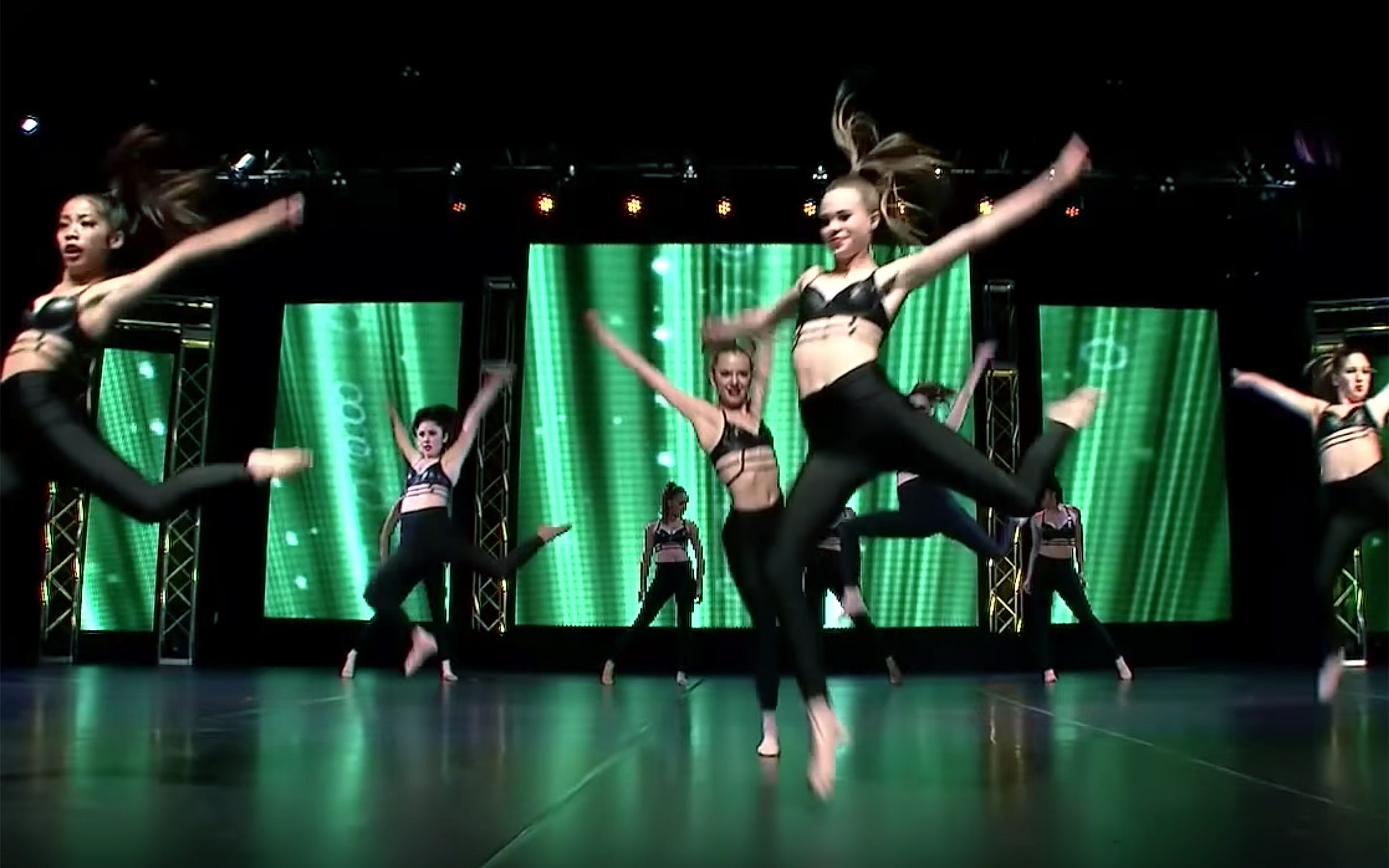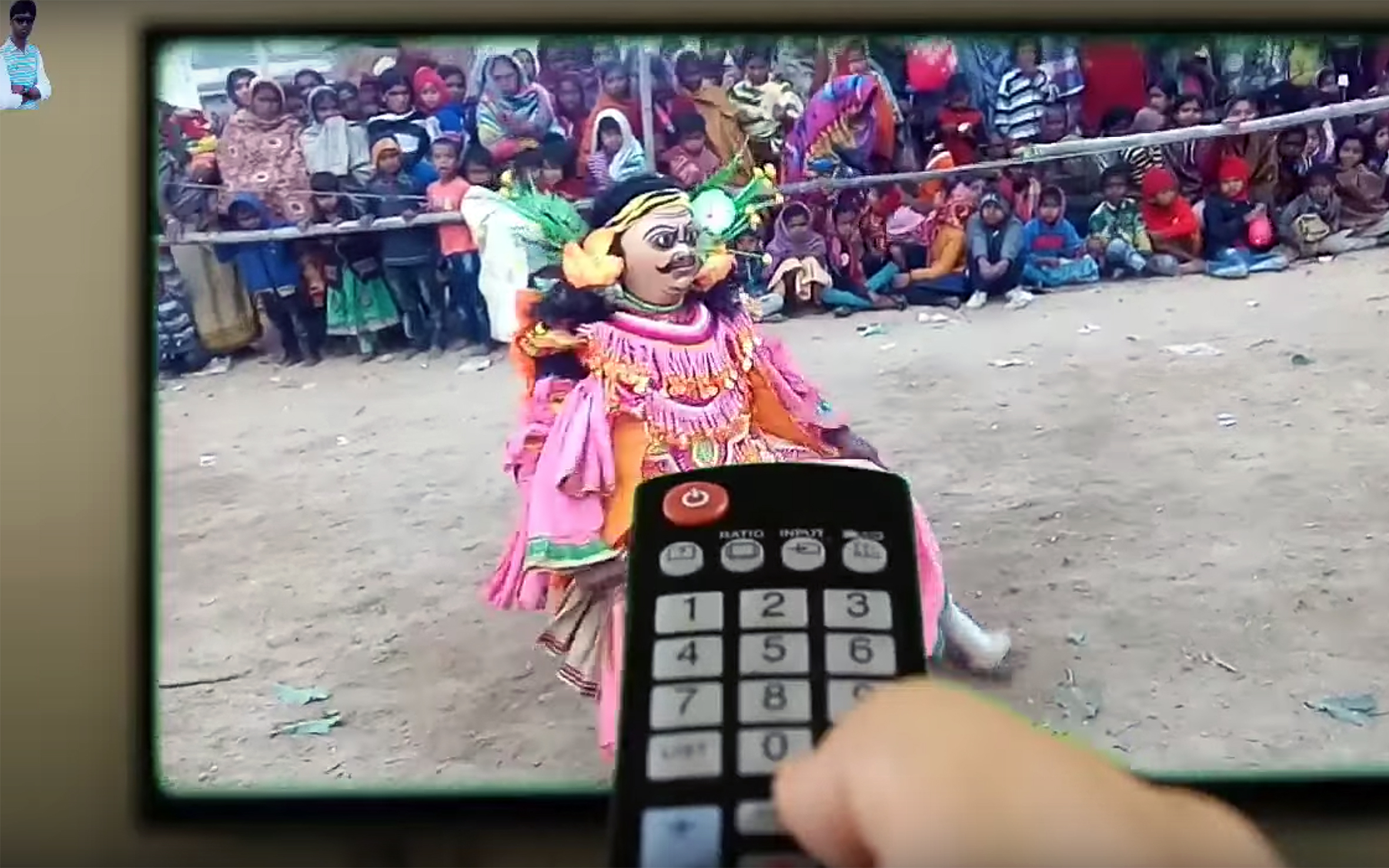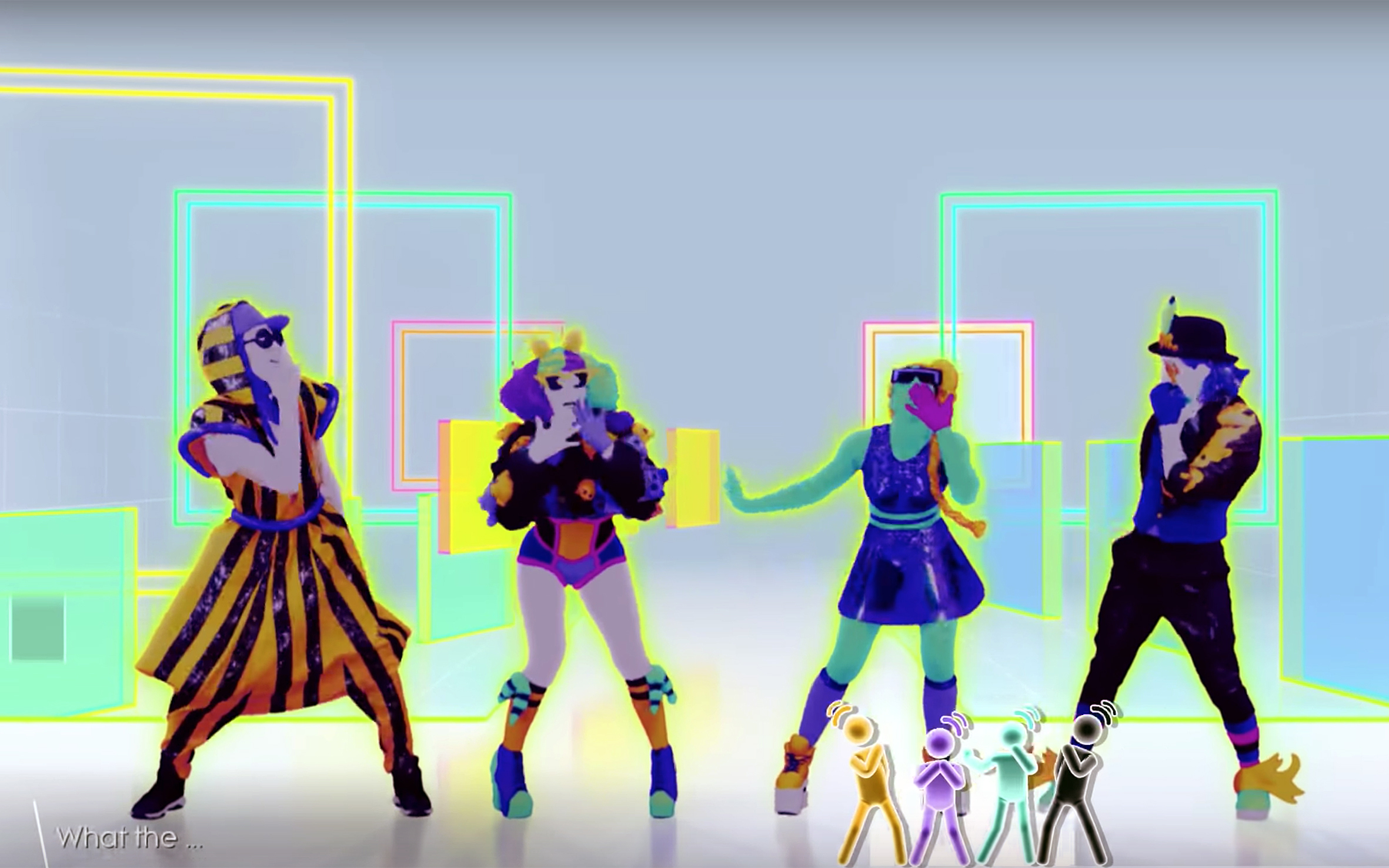415.JABBAWOCKEEZ DANCE / USA
JABBAWOCKEEZ DANCE is a dance performed by an American hip-hop dance crew called JABBAWOCKEEZ, best known for being the winners of the first season of ”America's Best Dance Crew” in 2008. This innovative dance crew was put together by dancers Kevin "KB" Brewer and Joe Larot in 2003 in San Diego, California. They participated in dance competitions with the idea of disrupting the existing dance scene. At the time they felt that dance crews were clones of one another and they set out to do something different. Jabbawockeez showcased freestyle dance and were able to strike a balance between dancing to the music, and dancing as an artistic expression. They do not have a group leader - choreography for their performances, as well as music and design choices, are made as a collective unit.
416.Jaipongan / Indonesia
JAIPONGAN is a popular traditional dance of the Sundanese people from West Java, Indonesia. It was created by Gugum Gumbira and based on traditional Sundanese Ketuk Tilu music and Pencak Silat movements. In the 1970s, the Indonesian government was opposed to the spread of Western pop music and encouraged the development of Indonesian styles of arts. Developed during this period, Jaipongan’s way of using traditional instruments appealed to the older generations, while the raunchy lyrics and dancing appealed to the younger Indonesians. The dance often makes use of fans and scarves, and is influenced by the movements of the local martial arts. Religious conservatives condemn its suggestive nature, encouraging men and women to dance together. It still remains popular throughout West Java and is considered to be a uniquely Sundanese form of art.
417.JAVA / France
JAVA is a dance which was developed in France in the early part of the 20th century. The origin of its name is uncertain, but it probably evolved from the waltz. Mainly performed in French bal-musette between 1910 and 1960, the dance was largely conceived due to popular demand for a new type of waltz—one that was easier, faster, more sensual, and would not require a dance hall as large as those typically used for waltzes. Java takes the form of a fast waltz, with the dancers dancing very close to one another, taking small steps to advance. Men will often place both their hands on their partner’s buttocks while dancing.
418.Jenile / Djibouti
JENILE is a traditional oracle dance of the Afar people, tied to their ancient Cushitic religion, predating the Islam that is practiced today. It is not considered what we might call a “dance” per se. The Jenile, who can be a man or a woman, will enter a trance and then deliver oracles. The men will then form a circle around the Jenile while chanting and clapping their hands. Then, the men in the circle, without moving their feet, will bend forward and start chanting faster and faster, until the Jenile in the middle answers the questions.
419.JENKKA / Finland
JENKKA is a Finnish folk dance, the Finnish version of Schottische. It is a fast partner dance, with men and women performing similar steps. In the initial dance position, a man is to the left of a woman, both facing in the direction of the line of dance, with their inner arms on each other's waists. Dancers go forward in a run similar to Polka. After that they join their free arms, assume the face-to-face closed dance position and proceed with the chain of pivot turns, stepping "left-right-left-right" or "left-hop-right-hop". The runs of similar steps are normally started at the beginnings of musical phrases.
420.JERA / Ghana
JERA was originally a religious music and dance of the Kparibas in Dagbon in Ghana, performed before and after hunting expeditions. It is now performed by most Dagbamba villages in Northern Ghana on diverse social occasions: festivals, funerals, and for recreation after a hard day’s work. The religious costume is however retained.
421.JERSEY CLUB / USA
JERSEY CLUB is a style of electronic club music and dance that originated in Newark, New Jersey in the early 2000s. It was pioneered by DJ Tameil and other members of the Brick Bandits crew, who drew inspiration from Baltimore club's hybrid of house and hip hop. Similarly to its Baltimore influences, Jersey Club music has an aggressive style defined by its fast, “bouncy” groove, with strong emphasis on dance accompaniment. Jersey Club frenetic, competitive dances have gained global popularity through viral videos.
422.Jazz dance / Global
JAZZ DANCE is a performance dance technique and style that emerged in America in the early twentieth century. It began as an African American social dance that had roots in African slave dances. Over time, a clearly defined jazz genre emerged, changing from a street dance to a theatrical dance performed on stage.
423.Jhumur Nach / India
JHUMUR NACH is one of the most famous dance forms of Assam, India, mainly performed by the tea tribes during the autumn season to take a break from their daily schedule. There are over 800 tea estates in Assam and in each one of them Jhumur Nach is performed on special occasions and festivals. Its steps remain synchronised with Madal—a popular two-headed hand drum. Further, the dance is accompanied by a flute and a pair of Taals that make the music harmonious. The dancers clasp each other’s waist while holding precision of the footwork. The male members wear long traditional dresses and women wear sarees with broad borders. The dress is simple yet colorful.
424. JITTERBUG / USA
JITTERBUG is a type of dance popularized in the United States in the early 20th century, and is associated with various types of swing dances such as the lindy hop, jive, and East Coast swing. In the 1940s it was a dance where a male and female dancer performed a series of moves not unlike the rock ’n’ roll dancing. It required skill and strength to throw the female dancer, which was considered too much for mainstream dancing couples. The jitterbug evolved into the rock ’n’ roll style dancing seen in the 1950s and 1960s.
424.Jive / USA / Global
JIVE is one of the five International Latin dances. Many of its basic patterns are similar to those of the East Coast swing with the major difference of highly syncopated rhythm of the triple steps called “chasses”. It originated in the United States from African-Americans in the early 1930s. It is a lively and uninhibited variation of the jitterbug, a form of swing dance. In the United States the term “swing” became the most common word used to describe this dance and the term “jive” was adopted in the UK. Variations in technique led to styles such as boogie-woogie and swing boogie. The modern form of the ballroom jive is a very happy and boppy dance, with the lifting of knees and the bending or rocking of the hips.
426.Joe Bollie masqueradE DANCE / Sierra Leone
JOE BOLLIE MASQUERADE is a dance performed by the Mende people in Sierra Leone during their masquerade called Joe Bollie. The dancers wear masks and costumes typical for the Mende tribe. This dance is performed at ceremonies and social gatherings.
427.Joenpa Legso / Bhutan
JOENPA LEGSO is a traditional welcoming dance for all ceremonies in Bhutan. It is performed to popular traditional songs during lay celebrations at home, at community gatherings or work celebrations, with the main purpose of welcoming the guest of honor, announcing a good start and for the good luck of the event. Usually it is performed by men and women dancing in line or sometimes in a circle. The choreography is quite simple, including graceful arm and hand gestures. There is little movement of the core body, which remains upright all the time. The dancers always start and end with the customary Bhutanese bow, arms stretched in front of the body, showing palms. The traditional attire must be worn. Simplicity in the coordinated movements is the key. The dancers are always part of the community or organisers of an event.
428.Joget / Malaysia
JOGET is a traditional Malay dance originated in Malacca. It was influenced by the Portuguese dance of Branyo, which is believed to have been spread to Malacca during the spice trade. It is one of the most popular folk dances in Indonesia and Malaysia, normally performed by couples in cultural festivals, weddings and other social functions. It also grew in popularity within the Malay community in Singapore after its introduction in 1942. With Portuguese roots, it is accompanied by an ensemble consisting of a violin of Western world, a knobbed gong of Asia, a flute (optional) and at least two rebana or gendang of Maritime Southeast Asia. The tempo is fairly quick with the feeling of teasing and playing between the partners. The music emphasizes duple- and triple-beat division, both in alternation and simultaneously, and is played in the Northeast Malaysia style.
429.Joninės dance / Lithuania
JONINĖS DANCE is a dance performed during Midsummer Celebrations in Lithuania, called The Magical Night of Jonine˙s. Nature was worshipped in Lithuania for centuries. Before the country became Christianised, Lithuanians were pagans who praised and venerated nature. They believed in nature deities because they were wholly dependent on nature and its whims. Jonine˙s is a midsummer folk festival celebrated all around Lithuania on June 24th. The traditions include singing songs and dancing until the sunset, telling stories, searching to find the magic fern blossom at midnight, jumping over bonfires, greeting the rising midsummer sun and washing the face with a morning dew, young girls floating flower wreaths on the water of river or lake. These are customs brought from pagan culture and beliefs.
430.JOOKIN’ / USA
JOOKIN’ took the classic steps of the Gangsta Walk and combined a much smoother look caused by the music change in Memphis Music during the early 1990s. Jookin’ is most noted for not only its smooth steps but also its heavy introduction of pantomiming into the dance style. It emphasizes footwork in a way that focused the crowds’ attention on the feet. It is especially characterized by the dancers’ abilities in sliding and stepping movements.
431.Joropo / Venezuela
JOROPO is the most famous folk dance in Venezuela and its national dance. It is a couple dance that consists of 36 steps. It features the hand turn and waltz turns. First, the partners dance a type of waltz holding each other tightly. Then they stand facing each other and make small steps forward and backward as if sweeping the floor. Lastly they hold each other's arms, and the woman does sweeping steps while the man stomps his feet along to the beat of the music. Joropo is also the most iconic Venezuelan music style, which combines South American, African and European musical elements. Common instruments used are the llanera harp, bandola, maracas, and cuatro — a special Venezuelan guitar with four strings.
432.JOTA / Spain
JOTA is a Spanish dance originating from the Spanish region of Aragon, but performed all over the country. It tends to be in 3/4 metre and is both danced and sung. In the Castilian style, the dancers are accompanied by guitars, bandurrias, lutes, a dulzaina and drums. The Galician form uses Galician style bagpipes, drums and bombos. Jota dancers wear regional costumes and sometimes castanets. Their steps resemble those of a waltz, yet there is a lot more variation. Jota songs can be about diverse subjects, from religious themes, to patriotic feelings, to relationships. Jota has been used by many classical composers i.e. Georges Bizet included a Jota in his famous opera “Carmen”. The dance has many different variations. It became very popular in the Philippines during the Spanish colonial period.
433.Junkanoo / Bahamas
JUNKANOO is the most important parade with music, dance and costumes in many cities around the Bahamas. The name “junkanoo” might come from the French word “l’inconnu”, which means “the unknown”, because most people parade with their faces painted or masked. This celebration is traditionally held twice a year, on December 26th and on the New Year, beginning between 2AM and the dawn, until around 3PM. In this festival people parade wearing masks and colourful costumes while dancing energetically to the rhythm of drums, bells and whistles. The largest Junkanoo parade happens in the capital Nassau, New Providence.
434. JUST DANCE / Global
JUST DANCE is a dance video game that expands upon a concept introduced in a minigame for Rayman Raving Rabbids: TV Party, players mimic the motions of an on-screen dancer’s choreography for a selected song, using the Wii Remote to judge the player’s motions and accuracy (eschewing accessories such as physical dance pads).




















